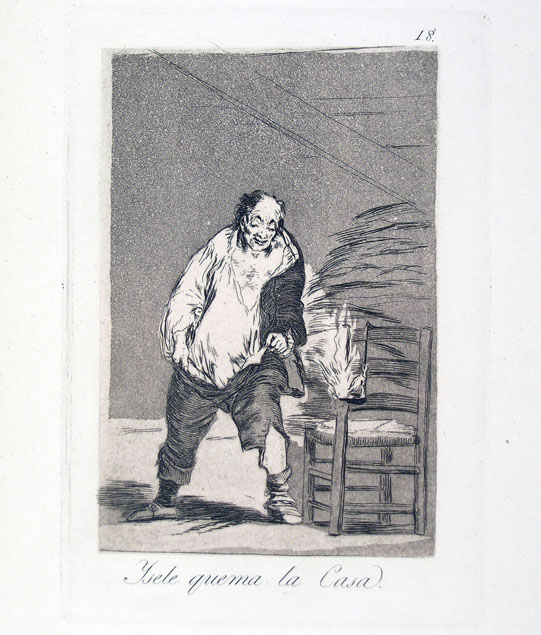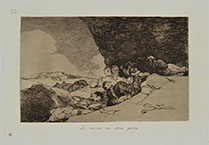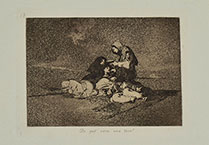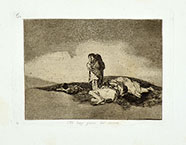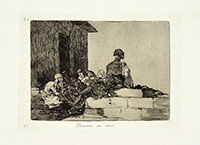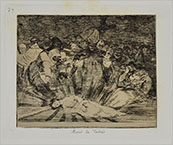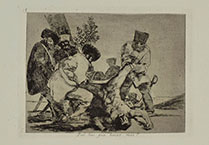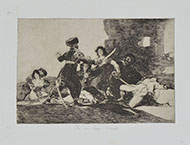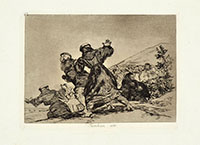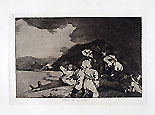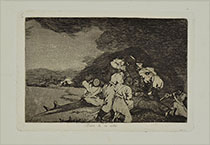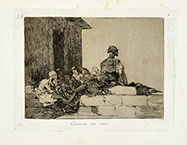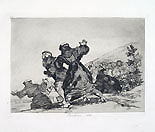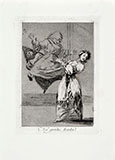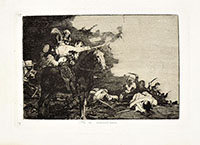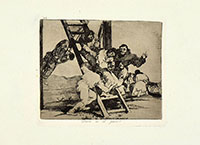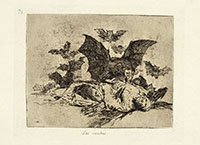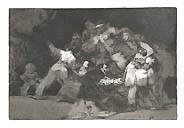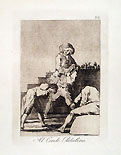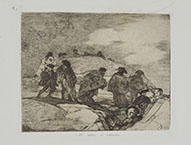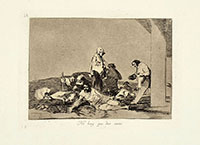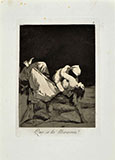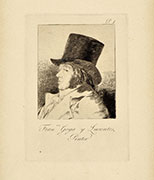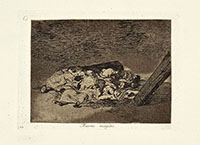(Fuendetodos, near Saragossa 1746 - Bordeaux 1828)
YSELE QUEMA LA CASA (And his house is on fire), 1797-98
Etching and burnished aquatint, plate 18 from Los Caprichos (1797-98); Harris 53, III, 5. An impression from the fifth edition (1881-86), limited to 210 copies, printed in sepia ink on wove paper. With margins, generally in very good condition. To the platemark 218 x 152 mm, the entire sheet measuring 332 x 241 mm.
One of the most influential series of graphic images in the history of Western art, Los Caprichos provides a satirical and damning look at 18th-century Spanish society. In the 80 etchings that comprise the series, Goya depicted the peasantry's superstitious belief in witchcraft, the arrogance of the nobility, and the widespread corruption of the Catholic Church. First published in 1799, only a few copies of the first edition were sold. Despite Goya's attempts to veil the critical nature of the series, he felt it necessary to withdraw the prints from circulation and make a gift of the plates and of the first edition's unsold sets to the King Carlos IV.
REDUCED PRICE
previous price was € 680
Goya is considered the most important Spanish artist of the late 18th and early 19th centuries and throughout his long career was a commentator and chronicler of his era. Immensely successful in his lifetime, Goya is often referred to as both the last of the Old Masters and the first of the moderns. His great body of works includes some 700 paintings, 900 drawings and almost 300 prints. He was a painter, an extraordinary portraitist, and a revolutionary printmaker.
In his teens he studied in Saragossa; in 1764 and 1766 Goya entered the competitions of the Real Academia de Bellas Artes de San Fernando in Madrid but failed; undaunted went to Rome to study past art; returned to Saragossa in 1771 and began to enjoy some success. In 1780 he was elected to the Real Academia de Bellas Artes and eventually became its Professor of Painting. In 1799, Goya became Primer Pintor de Cámara (Prime Court Painter) to Charles IV and María Luisa, the highest rank for a Spanish court painter. In the same year he published the first series of his etchings, Los Caprichos. In 1807, Napoleon led the French army into the Peninsular War against Spain. Goya remained in Madrid during the war, which seems to have affected him deeply. Although he did not speak his thoughts in public, they can be inferred from his Disasters of War series of etchings. Other works from his mid-period include Los Disparates etching series, and a wide variety of paintings concerned with insanity, mental asylums, witches, fantastical creatures and religious and political corruption.
His late period culminates with the Black Paintings of 1819–1823, applied on oil on the plaster walls of his house the Quinta del Sordo (House of the Deaf Man) where, disillusioned by political and social developments in Spain he lived in near isolation. Goya eventually abandoned Spain in 1824 to retire to the French city of Bordeaux, where he died.
